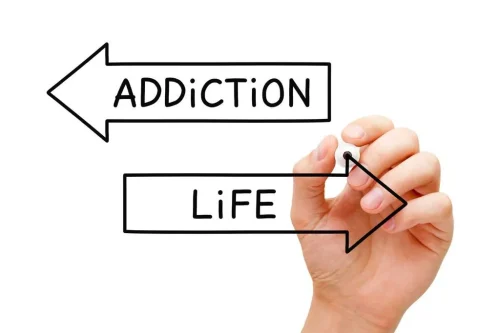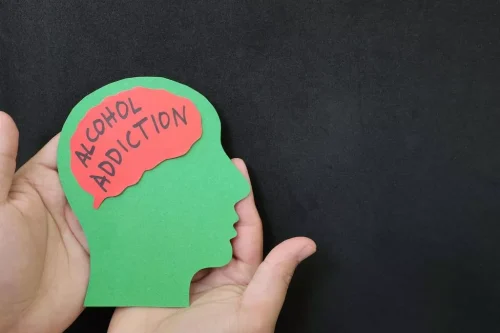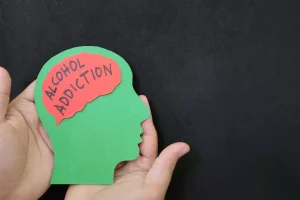Women’s Substance Use and Mental Health During the COVID-19 Pandemic PMC

Hurt and colleagues (1995) followed a cohort of cocaine-exposed infants from birth to age 6; although they found lower weight and head circumference, they found no difference in developmental scores between cocaine-exposed and non–cocaine-exposed infants. However, other evidence suggests that children exposed to cocaine during the first trimester were smaller on all growth parameters at 7 and 10 years of age compared with children who were not exposed to cocaine (Richardson et al. 2007). This longitudinal analysis indicated that the disparity in growth between both groups did not converge over time. Across studies, prevalence rates comparing the use and misuse of OTC medications among men and women vary according to age and race/ethnicity. For individuals 65 years of age and older, women are more likely to use OTC drugs (Halon et al. 2001). NSDUH evaluated the misuse of OTC cough and cold medications among persons aged 12 to 25 (SAMHSA 2007) and found that women aged 12 to 17 were more likely than men to have misused OTC cough and cold medications in the past year, while men between 18 and 25 years of age were more likely to have misused these medications.
Sudie E Back

Today, mounting evidence about the varied associations between domestic violence and substance abuse attests to the need to add violent behavior and victimization to the list of problems that should be explored and addressed during treatment. Based on their clinical experience, members of the Consensus Panel who developed this TIP conclude that failure to address domestic violence issues interferes with treatment effectiveness and contributes to relapse. Another problem is low self-esteem, which can stimulate the mechanism of initiation and substance abuse and cause addiction and relapse. Attention should be paid to the individual’s social environment, which significantly influences the behavior in question 68. Many researchers believe that psychological distress and low self-esteem influence the use of psychoactive substances 69.
ADB study highlights economic impact of climate change

An example of the “intersectionality paradox” could be seen in Rosenfield’s study on mental health at the intersection of sex, race, and class 8. The study demonstrated that, among women with higher than a high school education, Black women have lower rates of depression than White; among women with lower education levels, there were no significant differences between the two groups. These different patterns for women were not indicated in Black versus White men in the study. Women are more vulnerable than men to alcohol’s effects, even after drinking smaller amounts. Heavy drinking can lead to increased risk of health problems such as liver disease, brain damage, and breast cancer. Women are as likely as men to recover from alcohol dependence, but women may have more difficulty gaining access to treatment.
What causes alcohol use disorder, substance use disorder, or addiction?
In addition, animal studies suggest that the damaging effects of early chronic alcohol exposure are not overcome even when alcohol use ceases (Sampson 1998). Tobacco use also may increase the risk of osteoporosis and fractures; people who drink are 75 percent more likely to smoke, and people who smoke are 86 percent more likely to drink (Shiffman and Balabanis 1995). Women in menopause who enter treatment need bone density assessment, nutritional guidelines, and medication consultations. We conducted a cross-sectional analysis of the OptumLabs Data Warehouse (OLDW), which includes deidentified claims data for commercially insured and Medicare Advantage enrollees.
- Women are more likely than men to suffer alcohol-induced brain damage, such as loss of mental function and reduced brain size.
- Women are more vulnerable than men to alcohol’s effects, even after drinking smaller amounts.
- Recent encouraging advances include the development of integrated psychosocial treatments, and the examination of combined psychosocial and pharmacological approaches to treating the complex presentation of SUD and PTSD.
- In addition, drug abuse and HIV risks are a “pressing problem” that should not be ignored 42.
- Stringent guidelines from bodies like the Substance Abuse and Mental Health Services Administration (SAMHSA) and the Department of Transportation (DOT) enforce quality assurance, lab certifications, and adherence to drug testing protocols.
- Driving under the influence (DUI) offenses have been decreasing for men but increasing among young women (Lex et al. 1994).
Associated Data
„Illicit“ refers to use of illegal drugs, including marijuana (according to federal law) and misuse of prescription drugs. For most age groups, men have higher rates of use or dependence on illicit drugs and alcohol than do women.14 However, women are just as likely as men to develop a substance use disorder.15 In addition, women may be more susceptible to craving16–19 and relapse,20,21 which are key phases of the addiction cycle. According to the National Institute of Alcohol Abuse and Alcoholism, mounting evidence suggests that women are at higher risk for some of alcohol’s negative effects, such as liver disease, cardiovascular disease and neurotoxicity. Participants were nationally recruited online through Qualtrics panels as part of a larger longitudinal study. When someone joins a panel company, they complete a profile, which includes demographic questions that allow for the determination of potential eligibility for studies.
- Unfortunately, some authors report a lack of adequate funding to meet the indicated needs 21,36,39.
- Mills and colleagues conducted a randomized clinical trial of COPE among Australian civilians and found COPE to be superior in reducing PTSD and substance use symptoms compared to treatment-as-usual 24•.
- Compared to men who did not experience discrimination, those who experienced either racial or sexual orientation discrimination had higher depressive symptoms, but we did not observe any effect of experiencing both forms of discrimination.
- There are plenty of other ways to safeguard your health, such as regular exercise, a nutritious diet, keeping your weight under control, and not smoking.
Lauren Laverne given ‚all clear‘ following cancer diagnosis

To forestall divisions between the two fields, etiological differences must not only be recognized, but accepted as legitimate. A heightened awareness of the two problems, however, reveals that programs can forego an „either/or approach,“ shift priorities to accommodate a client’s situation, and still retain program identity and orientation. A female substance abuser’s living arrangements, for example, may be so dangerous that regular attendance at treatment will be impossible until safety issues are resolved. In this case, substance abuse treatment could be temporarily postponed and then reinitiated after a more secure environment can be achieved. Their batterer is their supplier, and they endure the intolerable in order to feed their habit. Delaying development of a safety plan until the drug problem is addressed could be a more effective strategy under those circumstances.
- Of these, 20 indicated they were not interested, 27 did not have Facebook, 329 did not meet minimum Facebook activity requirements, and 561 completed the screening questions but did not share Facebook data.
- Her research leverages big data methodologies to better understand substance use, stigma, and health disparities.
- Concurrent ethnographic fieldwork disclosed that fees for sex acts also decreased, in some instances from $10 or more to $2 to $3 per episode.
- These substances, classified as central nervous system stimulants, are increasingly contributing to various societal and workplace challenges, including elevated absenteeism, diminished productivity, and heightened safety risks.
- Denial, enabling, codependency, and powerlessness—terms widely used in the substance abuse field to describe typical client behaviors and aspects of recovery — strike some domestic violence workers as stigmatizing, repressive, and counter to appropriate goals for violence survivors.
- In the chapters that follow, experts in the respective arenas share their understanding about the impact of domestic violence on batterers and survivors.
- It influences a person’s risk-taking and health-seeking behaviors, exposure to health risks, and vulnerability to diseases.
- Some commonly inhaled substances include glue, paint thinners, correction fluid, felt tip marker fluid, gasoline, cleaning fluids and household aerosol products.
- They have even less body water, a heightened sensitivity to and decreased tolerance for alcohol, and a decrease in alcohol metabolism in the gastrointestinal tract (CSAT 1998d).
Research confirms that alcohol or drug initiation stems from the need to cope with anxiety, low self-esteem, depression, feelings of isolation, and the trauma of sexual abuse and violence among many adolescent girls and women. For men, on the other hand, initiation is often driven by the need to belong to a group 7,9,10. Substance use disorders (SUD) are complex and chronic diseases influenced by genetic, environmental, and social factors. Women present distinct epidemiology, natural history, course, and response to treatment in SUD.
Law enforcement and public health agencies are prioritizing efforts to address impaired driving Women and Alcoholism and improve road safety. The widespread prevalence of substance abuse in the U.S. has contributed to a rise in substance-impaired driving incidents. Data from the National Highway Traffic Safety Administration (NHTSA) reveals that alcohol-impaired drivers are involved in nearly 30% of all traffic-related fatalities, a figure that has remained consistently high. Additionally, the growing use of prescription drugs, recreational marijuana, and illicit substances has intensified the issue, leading to an alarming increase in substance-related accidents and deaths. These trends highlight the critical need for robust detection and prevention strategies to reduce impaired driving.
